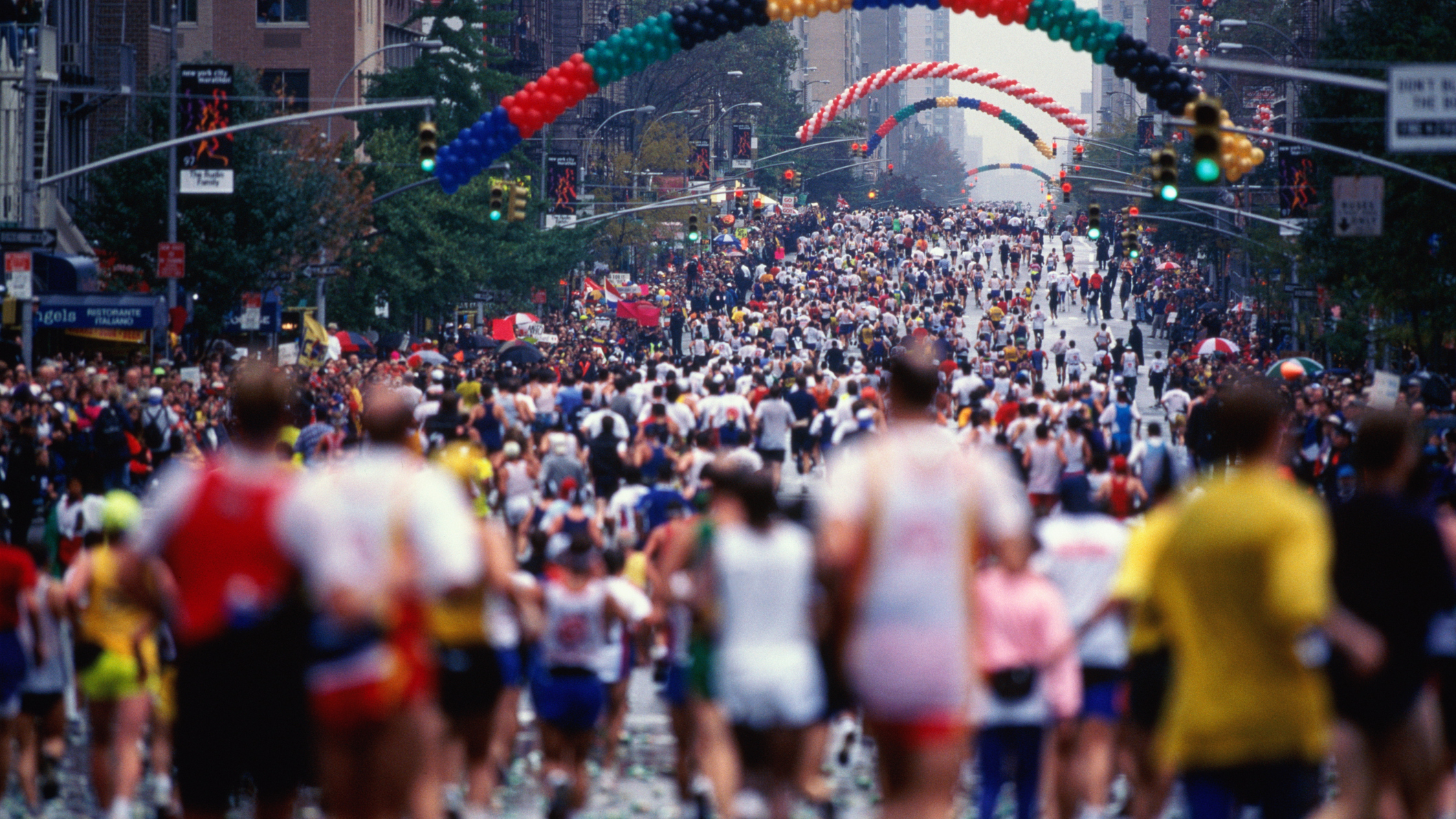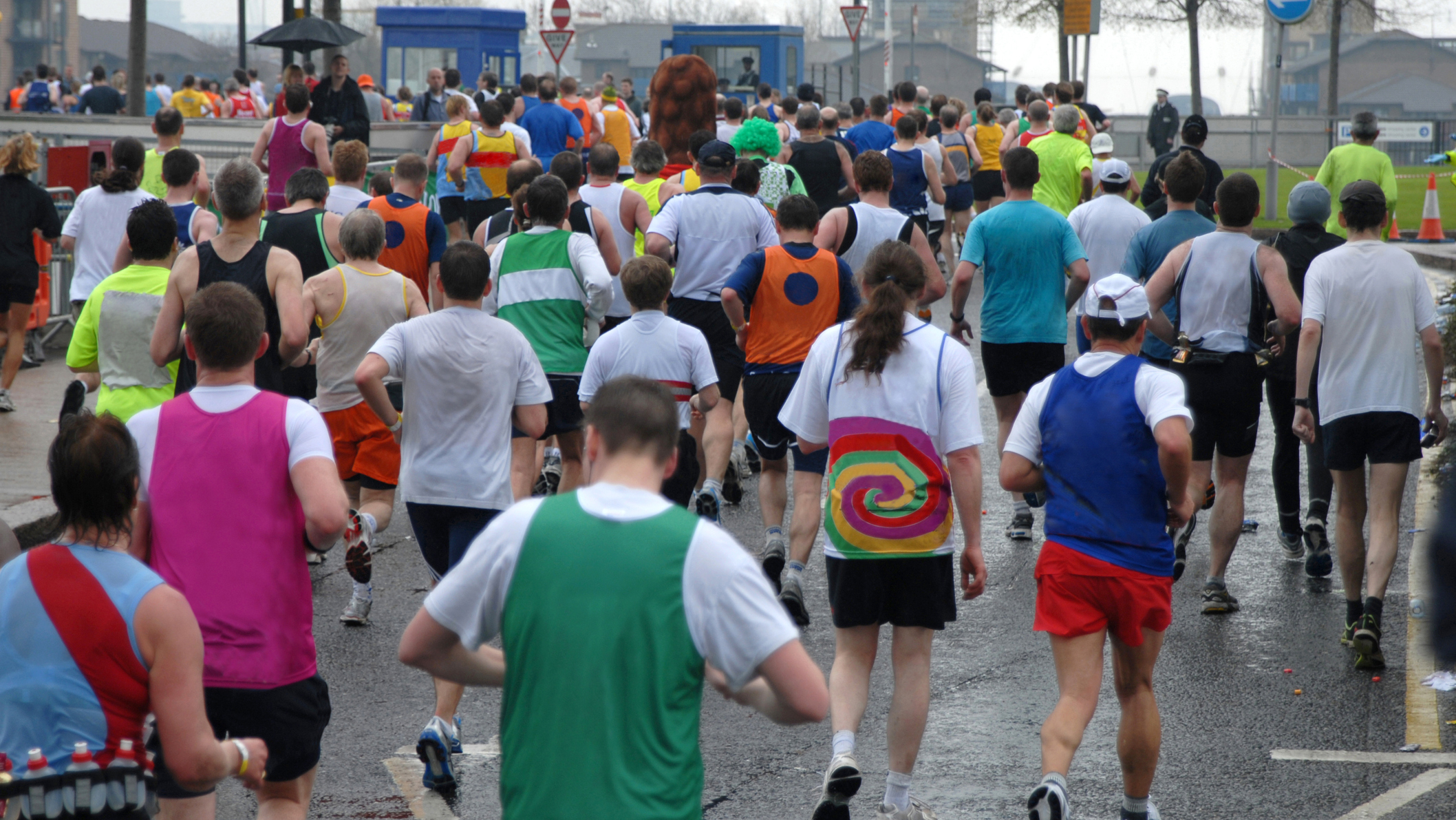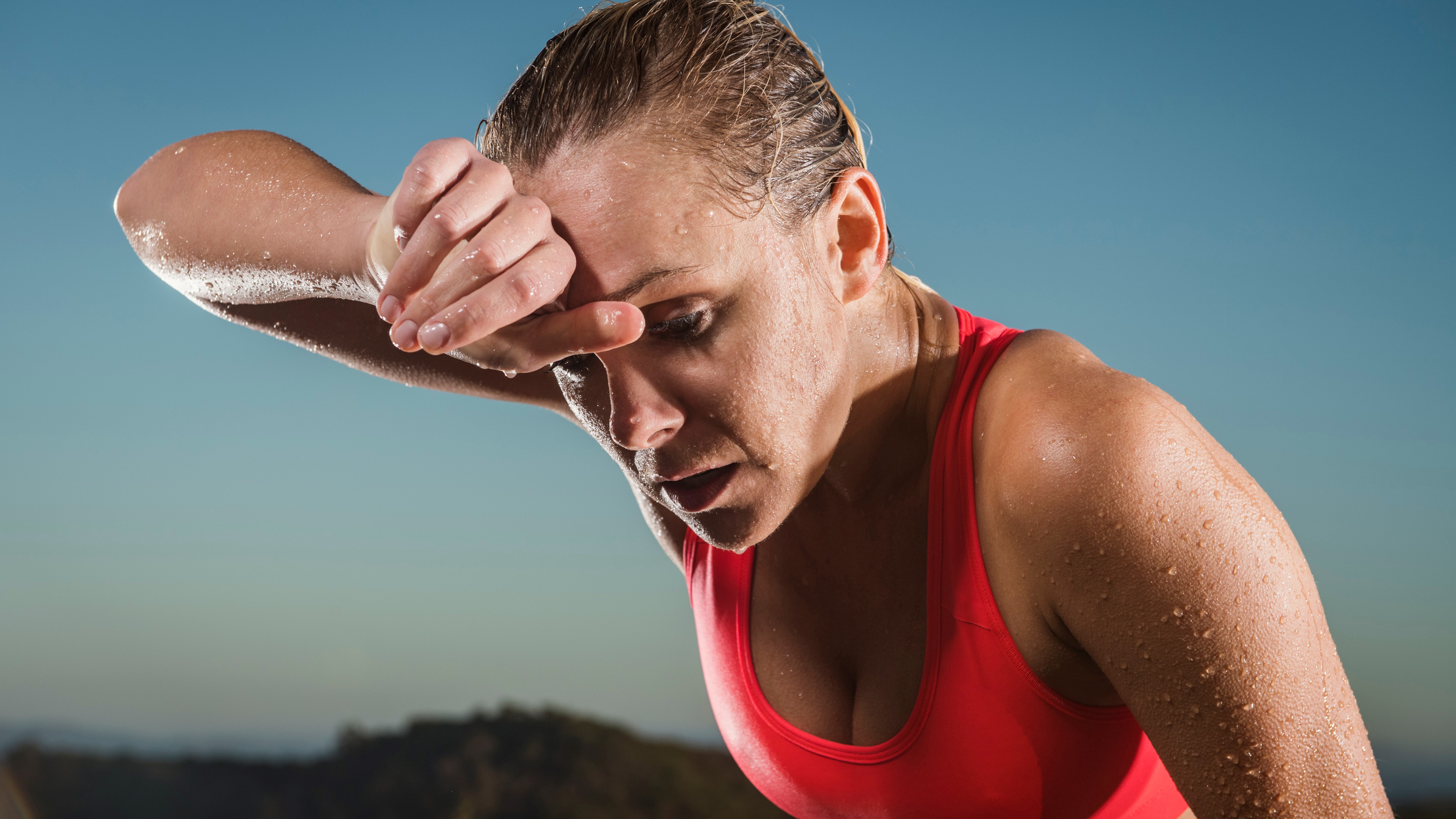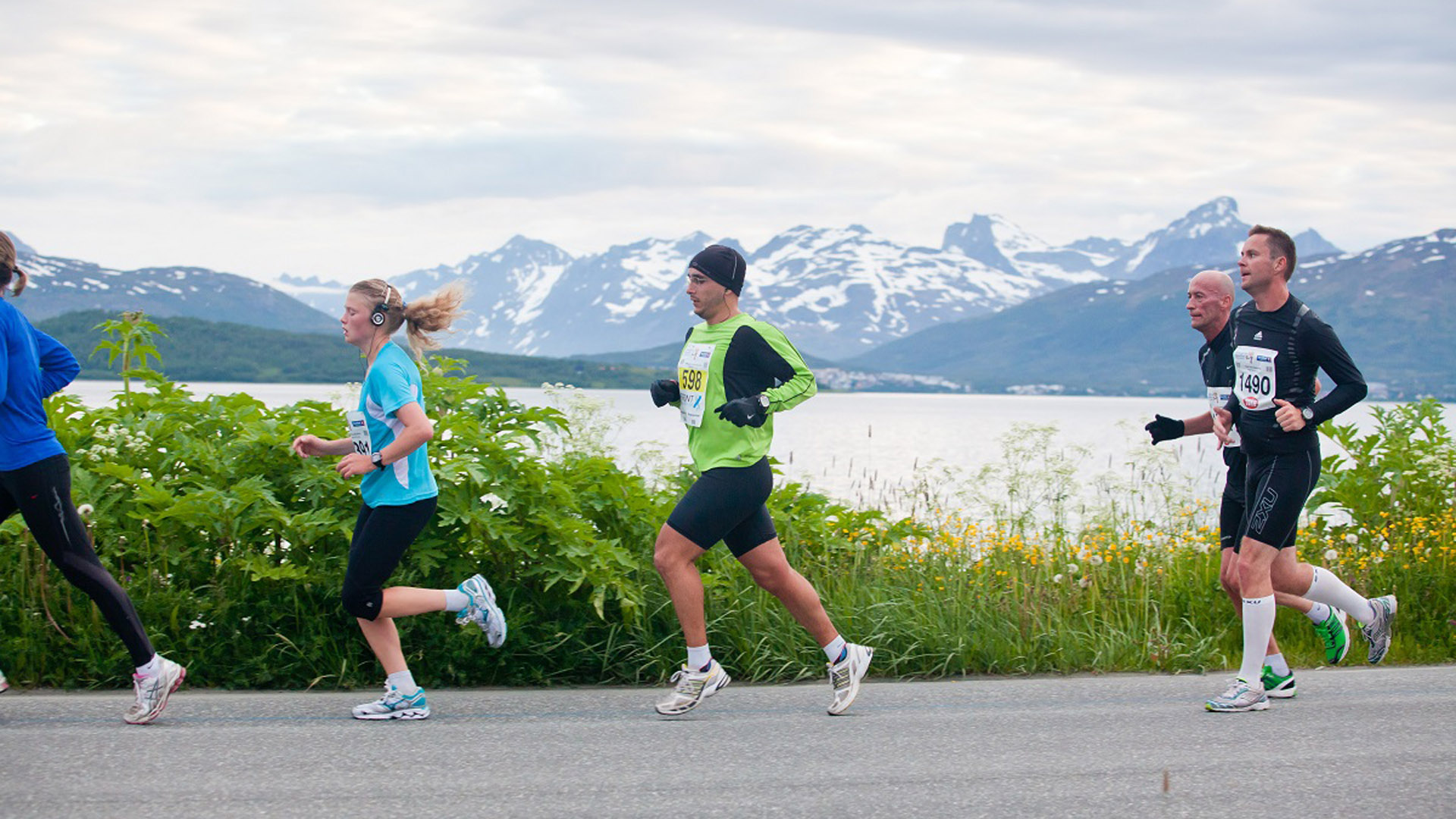What is overhydration? Expert advice for long distance runners
We speak to an expert in overhydration and hyponatremia to understand how overhydration happens to elite athletes, the dangers and how to avoid it on your next big run

In April 2018, 53-year-old Johanna Pakenham crossed the finish line of the London marathon with a finish time of six hours and 32 minutes. It was her fifth marathon, but unlike any other she’d run before – temperatures soared to over 75𝆩F (24𝆩C) that day, making it the hottest London marathon on record. Hours later, according to news reports at the time, she fell into a coma and was rushed to hospital. After her recovery, she told the BBC that she remembers nothing of the day after the halfway mark. The culprit, however, wasn’t heatstroke or severe dehydration, as you might assume; instead, Pakenham had developed a serious condition as the result of drinking too much water.
During a time when most of us carry a water bottle everywhere like an extra appendage, the idea that you can overdo things on the hydration front may seem difficult to grasp. But overhydration is more common than you might realize among long distance runners, and the consequences can be deadly. We wanted to understand how overhydration occurs, what symptoms to look out for and, naturally, how to avoid it, so we spoke to an expert on the subject, Dr Tamara Hew-Butler, a physician and associate professor of Exercise and Sports Science at Wayne State University. Her scientific work has been featured on National Public Radio, The Weather Channel and CNN as well as in the New York Times and Washington Post.

What is overhydration?
We all know that water is crucial to our survival, but it is possible to have too much water present in your body, known as overhydration, which can impair the natural functions of your body.
You might think that if you drink too much water, you’ll simply pee more, problem solved, and if you’re not running a long distance, this is largely true. Hew-Butler explains that if you drink too much fluid when you’re not exercising – say you’re socializing at the bar or have overdone it on the morning coffee – osmoregulatory sensors in your brain will get a message down to your kidneys to flush out the extra fluid, since it’s their job to balance water and sodium in your body at all times.
“When we run, however, our kidneys tend to hold on to the water for a bit longer so the body cannot get rid of the extra fluid "on the run" as efficiently as it can when we are not running.”
When you’re running long distances and consciously drinking too much water to avoid dehydration, you can overwhelm your kidneys’ ability to flush out water, all whilst losing sodium through excessive sweating, and this is where overhydration can lead to a life-threatening condition, as happened in the case of Pakenham.
“Overhydration is bad because if runners drink too much fluid, the extra fluid can dilute blood sodium levels, which can then lead to a clinical condition called "hyponatremia." When blood sodium levels get too diluted, the brain swells and runners can die,” explains Hew-Butler, who is an avid runner herself.
All the latest inspiration, tips and guides to help you plan your next Advnture!

It’s hyponatremia that you really want to avoid. The Mayo Clinic lists signs and symptoms of hyponatremia such as nausea and vomiting, headache, confusion, loss of energy, drowsiness and fatigue, restlessness and irritability, muscle weakness, spasms or cramps, and seizures and coma.
For endurance runners, Hew-Butler outlines a sequence of symptoms to look out for which, if you experience in conjunction with trying to drink as many fluids as possible, may be telltale signs that you’re heading towards hyponatremia.
“Bloating (i.e. jewelry, rings and clothing getting tight) and nausea are early signs of overhydration. The vomiting of clear fluids and headache is the next generation of symptoms which suggests the overhydration is becoming moderate to severe. Then, confusion and altered mental status – the runner is not coherent or does not recognize the crew members – is a really bad sign which requires urgent medical attention, before seizures, coma and death occur.”
Though hyponatremia is an extremely serious condition, Hew-Butler makes one thing abundantly clear: death and hospitalization from overhydration is 100% preventable. As soon as you suspect that you may have overhydrated, it’s crucial that you stop drinking.

How common is overhydration amongst runners?
The case of Johanna Pakenham is by no means the only example of an endurance runner falling foul to hyponatremia, though it’s perhaps the most publicized in recent years because she made it her mission to educate other runners about her experience. How common it is is hard to say for sure, but two studies on hyponatremia in marathon runners performed blood tests on race finishers – one at the 2002 Boston Marathon finish line and the other at the 2003 London Marathon – and both found the incidence rate to be between 12.5-13% among those sampled, amounting to thousands of runners per race. Hew-Butler’s own work at ultramarathons showed that as many as 30% of race finishers were hyponatremic when race conditions were hot, but says the true incidence rate depends on the length of the race and climatic conditions.
“In general, the longer and hotter the race, the greater the chance that runners will overhydrate.”
When you’re going the distance in hotter-than-normal conditions, you’ll sweat more and feel more thirsty, and also be more concerned about the pitfalls of dehydration, which can kill your performance quickly. If you out-drink your thirst and don’t replace electrolytes, or if you tend to eat a low-sodium diet, you’ll simply replace your risk of one life-threatening condition for another.
“It is a combination of both overdrinking to avoid dehydration plus not ingesting foods with sodium, which help absorption and maintenance of circulating blood volume, that causes symptomatic hyponatremia in elite runners,” explains Hew-Butler.

In the case of Pakenham, the cause may not be solely down to the hot conditions causing her to drink more however; it turns out that her slower pace (greater than five hours) may have contributed, too.
“We rarely see symptomatic hyponatremia in elite runners competing in standard-distance marathons because it is too hard for the faster runners to overdrink in events lasting three hours. At the standard marathon distance, we see overhydration in the slower runners because they are running so slow they can overdrink,” says Hew-Butler.
This somewhat common phenomenon has led many to the belief that overdrinking is something that only happens to slow runners – a misconception, according to Hew-Butler.
“In ultramarathon races, we see more "overhydration" in the faster, more elite, runners because they are sweating more, and trying to replace sweat losses by overdrinking,” says Hew-Butler, explaining that the risk of hyponatremia is related more towards "time on feet" than whether or not a runner is "fast or slow". Slower runners, therefore, are at more risk of overhydration in standard marathon distances while faster runners are more at risk in the longer races.

Finally, Hew-Butler points to the glaring issue of marketing around hydration by those who want to sell you their sports drinks, hydration bladders, running gels and hydration packs.
“The complexity lies in the marketing of fluids and supplements to runners (and non-runners) that suggest dehydration is evil and we need to consume as much beverage as possible,” says Hew-Butler, explaining that when it comes to hydration, there is no data suggesting that more is better.
“It is not true that drinking above thirst enhances performance. “
Though overhydration stands at higher levels than anyone would like, Hew-Butler says the incidence of life-threatening overhydration remains at less than 1% of all race finishers. She credits a sustained educational campaign urging runners to drink only when they are thirsty with a slight decrease in numbers, giving a current ballpark estimate of less than 10% for hot marathons and below 30% in ultramarathon races.

How can long distance runners avoid overhydration?
Drinking less seems like an obvious place to start, but how can you avoid your rtick of over hydrating without getting dehydrated? When your training gets down to minute details like seconds on the mile, it’s natural to want an expert like Hew-Butler to give you a precise formula of exactly how much water to drink during your marathon, but despite what the adverts tell you, she explains that it’s just not that simple. Fluid regulation is unique to each runner and depends on a wide spectrum of variables, including your weight (the fluid needs of a 40 kg runner will differ from those of a 90 kg runner), the distance and pace at which you run, and the external conditions including outside temperature.
That said, there is still a reliable way to ensure you’re not drinking too much – or indeed too little – water when you’re running, and it all comes down to learning to listen to your body’s cues.
“Your brain has a magic formula that works in real-time that is hard-wired into each and every healthy person's DNA, technically referred to as the brain-kidney osmoregulatory axis. It is the physiologically-mediated, behaviorally-mediated sensation of "thirst". If we drink fluids when we are thirsty and don't drink fluids when we are not, our bodies will avoid both dehydration and overhydration. It really is that simple.”
Under normal conditions, you don’t need a blood test, or any advertising, to tell you how much water you need to drink. You have your own thirst sensor embedded into your brain, testing your blood salinity in real-time. Use it, and keep running.
Julia Clarke is a staff writer for Advnture.com and the author of the book Restorative Yoga for Beginners. She loves to explore mountains on foot, bike, skis and belay and then recover on the the yoga mat. Julia graduated with a degree in journalism in 2004 and spent eight years working as a radio presenter in Kansas City, Vermont, Boston and New York City before discovering the joys of the Rocky Mountains. She then detoured west to Colorado and enjoyed 11 years teaching yoga in Vail before returning to her hometown of Glasgow, Scotland in 2020 to focus on family and writing.

